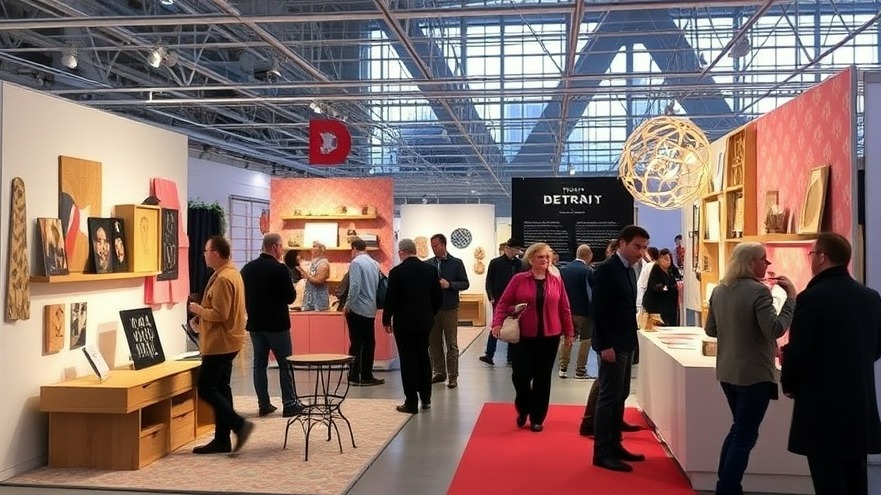
The Exciting Intersection of Design and Remote Work
The recent Detroit Warehouse: Art and Design Fair, an exhibition that brings together local designers and a vibrant array of creative works, underscores the significance of aesthetically pleasing environments—particularly for those working remotely. As more professionals adapt to digital nomadism, understanding how design impacts productivity is essential. This Detroit fair showcases innovative design that could inspire remote workers to enhance their own workspaces.
What Sets This Exhibition Apart
Curated by Bilge Nur Saltik from Form & Seek, this exhibition stands out as a focal point for the Detroit design community, offering an excellent opportunity for collaboration and inspiration. Saltik noted, "Detroit has long been waiting for a central design fair during Month of Design." This consolidation of design talent in one location exemplifies the potential for remote workers to benefit from beautifully crafted, functional design elements that can influence their productivity.
The Role of Glass Design in Workspace Aesthetics
Among the featured works, a novel glass brick design by local artisans Catie Newell and Alli Hoag is particularly noteworthy. Dubbed "Light Forms," these modular glass blocks can be rearranged to create various structures that diffuse light in distinct patterns. Well-orchestrated lighting is essential for remote workspaces, as it can greatly impact mood and productivity. Utilizing design elements like these glass blocks can invigorate one’s workspace, making it not just functional but also inspiring.
Ergonomics in Design: Enhancing Comfort and Productivity
As an ergonomics specialist, I recognize the importance of both comfort and aesthetic appeal in remote workspaces. The exhibition features ergonomic designs like flexible laser-cut lamps by Justin Bailey that adjust to create comfortable lighting conditions. A thoughtfully designed workspace reduces strain and increases productivity, making these design philosophies crucial for those working from home or on the go.
Incorporating Local Art into Your Workspace
Local art considerations, like those featured at the Detroit fair, can be a game changer for remote workers. Simon Anton's decorative wall hangings made from recycled materials reflect Detroit's architectural heritage and can serve as personalized motivators in a workspace. Creating a space filled with local art not only promotes creativity but also fosters a connection to community—something that digital nomads often miss.
Tips for Enhancing Your Remote Workspace
Drawing from insights gleaned at the Detroit exhibition, here are a few actionable tips for creating efficient and enjoyable remote workspaces:
Emphasize Lighting: Use design elements that diffuse light well; consider adding adjustable lamps to control brightness.
Incorporate Color: Bright, lively colors can improve mood and creativity. Use art or functional decor in vibrant hues.
Choose Ergonomic Furniture: Invest in odd shapes and forms that offer comfort while still contributing to the overall aesthetic of your space.
Personalize Your Space: Use local art that reflects your personality, as seen in the works showcased at the fair.
Integrate Nature: Where possible, bring plants or natural elements into your workspace to enhance wellbeing.
Final Thoughts: Design as a Motivational Tool
The Detroit Warehouse: Art and Design Fair not only celebrates local talent but illustrates how thoughtful design can reignite the passion of remote work. By creating inviting and comfortable workspaces, remote workers can maximize their productivity while staying connected to their community and creativity. As you adapt your workspace, consider how the principles of design featured at this exhibition can inspire your own journey towards efficiency and comfort in your work-from-home life.
 Add Row
Add Row  Add
Add 




Write A Comment